

Raymundo Moya III - NanoJapan 2013
Rice University
Major/s: Chemical & Biomolecular Engineering
Anticipated Graduation: May 2017
NJ Research Lab: Saito Lab, Tohoku University
NJ Research Project:Simple Model for Thermal Conductivity in Carbon Nanotubes and Nanoscale Materials
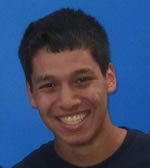
Meaning of NanoJapan - Post-Program
NanoJapan was one of the best experiences of my life so far. While there was plenty of structure and work to do, I was able to live and experience Japan on my own time and experiment with a brand new culture with close friends from NanoJapan.. Working on theory in Saito-sensei’s lab was one of the hardest things I’ve had to work on and I was able to learn a large amount in science, math, and nanotechnology. When I left this summer, I was unsure of whether I would want to attend grad school or what I would major in, but this summer has solidified my career goals and convinced me that I want to attend grad school. Above all, this program gave me great friends from the NanoJapan program and the country of Japan. I was able to form strong friendships with my lab mates and dorm mates in Sendai. I left Japan with close friends, a good deal smarter, and with experiences I never thought I would ever experience from Mt. Fuji to snorkeling in Okinawa.
Research Project Overview
This summer I worked on theory with the Saito-group and it was a very interesting experience. I admit that my experience in research was slightly different from much of the rest of the NanoJapan students who were experimentalists, but I very much enjoyed working on theory for Saito-sensei. Instead of working with a large lab of mostly Japanese students, I got to work in a small lab of 4 students where 2 were from Indonesia, 1 from Brazil, and only 1 from Japan. My international experience was literally ‘international’ as it included discussions with students from all over the world and not just Japan. I got to try new foods, learn new languages, and understand the similarities and differences of not 1 but 3 countries. Most importantly, the small group allowed for me to become very close with my mentors and lab mates as we interacted on a daily basis with one another and got to work together through our problems and presentations.
When I joined NanoJapan, I was not sure whether I would rather do basic science or applied engineering, and Kono-sensei placed me in Saito-sensei’s lab which provided me an excellent opportunity to work in basic science. I enjoyed my research very much as I got to work on my own project and study many different solid state physics topics throughout the summer. I learned more than I ever thought I would and I enjoyed the application and learning the process of science through my lab mates as well. My project consisted of studying phonons in Carbon Nanotubes and relating atomic vibrations to temperature transfer in the material. My mentors taught me Mathematica and solid state physics and how to approach solving different problems. I learned a large amount of science and math that will be used in my future undergraduate course in Chemical Engineering, but above all they have taught me how to solve and approach various problems. I feel like my research experience gave me a chance to use science to solve real problems as opposed to the synthetic problems of college courses.
Saito-sensei had set up my experience, so that I would meet with 2 of the 4 lab members each day. This provided the chance for me to learn from and talk to everyone in the group. I would also meet with Saito-sensei each day for about an hour and discuss what I learned and where I was heading. While sometimes I felt like different members were teaching me different subjects that did not quite connect, I was able to get different views and approaches for the problems I was attempting to solve. I was able to hear many different opinions and approaches to problems that always helped me move forward. My daily schedule revolved around meeting with members to discuss problems (or for them to teach me) and time put aside for me to work on my project and assigned homework problems (made to teach me different concepts). All of lab mates were awesome. Each of them taught me so much, and I was able to view different perspectives on solving different theoretical projects. I not only learned about my own theoretical project, but was able to learn about each lab member’s individual project which allowed me learn about different topics in carbon materials. While I was not given an exact ‘mentor’ and was supposed to interact with each member equally, I definitely tended to interact with Hasdeo-san and Mizuno-san a bit more. Hasdeo-san met with me daily and discussed my project while Mizuno-san basically taught me everything I know about Mathematica. The two of them built much of my knowledge and really helped build the simple theory I was working on for heat transfer in Carbon Nanotubes. However, all the lab mates still made large contributions to my studying as they met with me twice a week to teach me different science and mathematics. My lab mates were great and when I left the lab, I was a lot more sad than ever thought I would be.
Daily LIfe in Japan
Living in Japan this summer was one of the most fun/busy experiences I have had in my life. Monday through Friday I would have to be at work at 9:00 am, so I would have to wake up around 7:30 where I would quickly shower and eat breakfast and begin my walk up the hill of Aobayama campus. I would normally take the bus, but every now and then I would miss the bus and be forced to, literally, hike up the mountain to the campus where I worked. The walk was never too bad, but I generally worked up a sweat and was hoping to catch the bus each. I would stay at the lab till around 6:00 or 7:00 where I would catch the bus back home. Luckily, I was able to come home to the ‘Sendai Crew’ at Urban Castle Kawauchi (UCK, our dorm). Every day I would come home to Michael and Lila from NanoJapan and hoard of other international students at the dorm. We would normally cook and eat together (unless we decided to go out to the many restaurants nearby). We would normally cooked simple meals like ramen or pancakes, but I often made some Mexican dishes that my mom taught me and I even made a cheeseburger for myself once. The dorm had an excellent kitchen and we were often invited out to eat or to dinner parties with other students staying at UCK. We had great times with different people from Switzerland, England, France, and all over the place. I had been told before NanoJapan started that Sendai had the ‘best situation’, and I totally agree now. Living with Michael, Lila, and all the different people at UCK provided an excellent experience that let me experience Japan and the different cultures from around the world.
On the weekends, Michael, Lila, and I would go out visiting different places. Living in Sendai provided an excellent opportunity for us to go touring different places. We were able to visit places like Matsushima and Omoshiroyama where we could hike and relax on our weekends. We got to see many different beautiful places that were within close reach of Sendai. We even managed to hike (and get lost) on Zao, which is a mountain famous for its ski slopes and hot springs. I had an intense amount of fun this summer living in Sendai and even managed to learn solid state physics from top to bottom from theoretical physicists.
My favorite experience in Japan was…
Going Hiking with the Sendai group in various places and taking in the beauty of the surrounding area.
Before I left for Japan I wish I had…
Studied the Katakana more and read on some basic Japanese.
While I was in Japan I wish I had…
A book on top tourism spots in Japan. It can be a little corny, but if you have a decent one it can lead to some hidden treasures in Japan that you may have never heard of. They can also give directions and tips on hotels for traveling.
Pre-DepartureTips: If I could do it again, I would have got that katakana down before going to Japan. I would have packed fewer clothes. You can definitely get away with one suitcase, a duffel bag (or small suit case), and your back pack. Pack light with maybe two or three sets of ‘dress clothes’. Guys don’t need suits as they can get away with dress shirts and slacks. If you plan on climbing Fuji, I got away with five shirts (two long sleeve) and a hoodie (sweater) If you are doing Fuji, gloves are a necessity (but I’ve heard socks work!) and something to keep your head warm would be nice. For Fuji, bring food (like chocolates), and be prepared to freeze and have fun. Also, it would be a good idea to bring a light jacket, like a windbreaker. Something to keep out rain and it does get a little bit chilly in some parts of Japan throughout the summer.
Orientation Program Tips: The Orientation in Tokyo is one of the best parts of NanoJapan. It’s going to be hard and you’re going to be tired, but make the most of it. Work as hard as you can at Japanese and see as much as Tokyo as you can. Go out and have fun, talk to Packard-Sensei (she is the best person ever), and learn Japanese. And attempt to sleep.
Mid-Program Meeting Tips: To get to Kyoto, Sendai kids would need a full JR past, which could be a great investment, but if the Mid-Program Meeting is in Okinawa again and they fly you there, then my tips would be to relax. Have fun, bond with the students, and make the most out of the little vacation you have. The Mid-Program meeting can be a lot of fun and don’t worry about the work because it will ultimately be a lot of fun.
Working With your Research Lab Tips: As for integrating into the research lab, just be yourself! Be nice, work hard, ask questions, seem interested and talk to your lab mates. Everyone is super nice and will be really happy to take you in and include you in the different things they do. I personally wish I had gone out with my lab mates more. You should try getting together with them outside of work. Ask them to show you around town or take you out to eat or something. Try to make friends and not coworkers.
Living in your Research Host City: Sendai has the best setup. I was told that last year and it’s the truth. If you stay at Urban Castle Kawauchi (UCK), you will have a great time. You will be surrounded by international students and generally have several NanoJapan students there with you. I would say to be a ‘social butterfly’ and spend time with the international students and the NJ students. Everyone can be so much fun and they can take you to a bunch of different places to experience different things.
As for living in Sendai, be prepared to buy an umbrella for the rainy season. If you have to get to Aobayama campus it is easiest to take the school bus to campus or you can walk, but that can be quite the hike. I understand that Saito-sensei does not lend bikes to his students and so you might want to look into getting one so that you can get around, but it isn’t completely necessary as Sendai is completely walkable and you can get anywhere important by walking. On the weekends you should take the trains to try to see Omoshiroyama, Zao, Yamadura, and Matsushima. There are many beautiful places you can see around Sendai and you should make an attempt to see some beautiful scenery in Japan.
Lastly, the knives are in the bottom cabinets in the kitchen at UCK! We went all summer without good knives to find out in the last couple weeks that there was a ton of knives underneath the sinks!
Language Study Tips: Learning a Language is never easy, so just be prepared to work hard and I would suggest working really hard so you can work your language in Japan! Before learning, learn that Hiragana and that Katakana. No one ever does, but you really should because it would really help. You should also study the Katakana as much as possible as these will show up in all the restaurants you go to and will be the only thing you can read, unless you already know some Kanji. There are also languages at Aobayama campus that you can take, but I am not sure if there are free classes at any of the other campuses. If you want to take classes, just talk to the mentors and they will be happy to set up classes for you. It would be a good idea to look up the language before going to Japan, but I understand you’re busy and may not have too much time on your hands. Just be prepared to work hard, and you get out what you put in when it comes to learning the Japanese language.
What Gifts to Bring: My first tip would be to not be too worried about it. Just bring simple things from your hometown or homestate that you may find corny, but others may find interesting. I brought a Texas beltbuckle, some shirts, and chocolates. From what I’ve heard, edibles are generally a large favorite, but basically anything you bring will be liked and interesting to your mentors. Bring like 7 or so gifts and have fun with it. Bring things with a story that will make them smile.
What to Eat: There are so many different things to eat Japan and you will eat so many things before you get out. If I had to suggest one thing, I would say the ‘gyutan’ or ‘beef tongue’ in Sendai. It may sound a little weird, but it is really good and similar to steak I would say. There is also ‘yakitori’ which is like meat on skewers, but is usually delicious and can be weird meats like chicken heart or other weird things. Yakitori restaurants are also fun places to be as they can be fairly traditional and are usually group oriented.
Why NanoJapan? (Pre-Program)
I applied to NanoJapan because I saw an opportunity to mature, experience a culture outside of our own, and participate in scientific research that I am passionate about. NanoJapan contributes to my undergraduate experience as I plan to attend graduate school and NanoJapan may confirm my future plans while providing a gate way to participate in the intricate business of scientific research. I also get to experience a particular branch of engineering, nanotechnology, which is quickly growing and changing the world. As I enter the NanoJapan Program, I look forward to the struggles of mastering a new language and the exciting process of learning difficult scientific material.
NanoJapan provides an amazing opportunity to first-handedly experience advanced scientific research while experiencing a completely different culture. I have always been passionate about physics and chemistry and NanoJapan offers a deeper understanding and the chance to witness science’s powerful applications. This opportunity for young undergraduate students brings experiences of a new world and hard work in a lab environment. A bridge between two countries is being built to unite different cultures in an attempt to further pursue science. The students involved gain the ability to understand differences and learn to work over culture barriers to advance science and technology.
My goals for this summer are to:
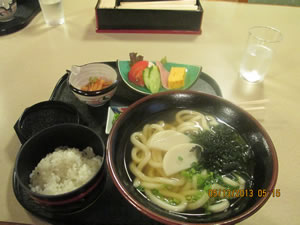
Udon Breakfast at the Sanuki Club: The first of many meals I’ve been scared to eat, but amazingly enjoyed.
After arriving in Japan and taking the bus to Tokyo, the first thing I realized was how similar it was to the United States. I guess I had imagined Japan to be entirely different from the world I lived in, but the only clear difference I could see in the world around me was that it was a little bit more green (and prettier) with street signs I could not understand in the least bit. I also imagined the people and culture to be largely different from people back in the states, but from interacting with the people around us and struggling with the language barrier to order ramen, I have come to realize that we are all still just normal people with little differences here and there. I was expecting a large culture shock that would make me miss home, but I am instead smiling at these cute little kids who walk to school each morning holding hands with one another. Tokyo is also one of the most beautiful cities I have been in. It is definitely clean and while being a bit busy with people, the subway makes logical sense and the restaurants are to die for. Another object I was scared of was the food, but everything I’ve ate here has been delicious, although the chopsticks can be a challenge!
The Japanese language classes have been very intensive, but I do feel like we have learned a lot of the language considering we have only had 4 days of classes. While we are in no way bilingual and struggle to tell the time (literally the hardest thing in the word!), I feel like we have all at least learned some of the basic words of the language and at least understand the basic sentence structure. The words of little things are always hard to come to mind, but some words have even remained in the back of my head like des for ‘is’, ka for a question, and the concept of particles. However, learning the language has been a very difficult task! It is in no way easy to learn a language and Japanese is no different. I struggle with everything from sentence structure to numbers, but I do feel that I have a grasp on the language and it will come in time. I hope that I can participate in a conversation before our time is up! While being here in Japan, some of the little words have been nice to know! Sumimasen for ‘excuse me’ and arigato for ‘thank you’ are two phrases used very often (very very often!), but some of the more complicated phrases have also been coming in handy as well lately. I’ve managed to ask for the price of an item in a convenience store and been able to connect segments of sentences while ordering food from restaurants. Other than using the language to order food and buy from stores, the language rarely comes up around town, but we get plenty of practice and I hope to get better with time.
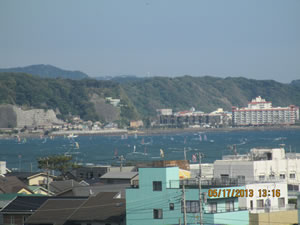
Kamakura Beach: Had to have been of the most relaxing places I have been to and I’d really love to go back and take a swim.
The first discussion with the KIP students was a great one, although I am not sure how much I enjoyed the presentation we had. While it was still enjoyable, I think talking to the students was the best thing that we had. They were very fun to talk to and working through our broken language barrier was a great experience. They are also incredibly smart and excited to talk to us, which feels good when you are constantly surrounded by people you don’t know! Talking about the small differences between the cultures was also a great experience which allowed us to compare the daily lives of one another from the hour and half commute they make every day to go to school compared to my personal 5 minute walk! The students were plenty of fun as Tepe and Mami (two KIP students) took us to visit temples in Kamakura and they were just awesome people. They were plenty of fun and took us to great places to visit along with this awesome burger place close to the beach! This was plenty of fun and I believe Tepe plans on going out with us within the near future.
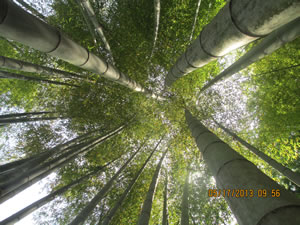
Bamboo: Part of the beautiful green that surrounded the temples and the rest of Japan
Since we arrived in Tokyo, we have managed to use the subway (the chikatetsu in Japanese) almost every day for various kinds of trips. One of the first things you notice is how effective and useful the subway is for transportation and you can use this opportunity to observe Japanese in their everyday life. The rules of the public transportation have not changed much as you are still expected to be respectful whether you are sitting or standing and you are to be respectful to other’s belongings. I have seen younger men give up their seats for women or elderly and attempts are made to make travel easier for the disabled or elderly. However, there are still things that you notice on an everyday visit to the subway. One interesting event I saw was when a seat opened up and two men offered the seat to one another, but neither accepted the invitation and instead both kept standing for the remainder of the trip. I believe this was a chance to observe the kindness and respect the Japanese have for one another. Another subtle difference is that people are not allowed to eat on the subway (or really anywhere out in public) and we have managed to win stares from people as we ate ice creams riding the elevators up! Another difference is that there are not many loud conversations on the subway and even when they travel in groups they tend to be very quiet whereas in the states the subway can be full of conversation and laughing. I feel that these two events are mostly practical to keep public areas calm, clean, and as peaceful as possible, but that these events stem from the Japanese’s respect for one another and trying to keep ‘harmony’ between everyone sharing the public transportation. Another interesting observation was that many Japanese often fall asleep on the subway without the fear of being harassed, robbed, or anything. This shows the trust that the Japanese have in their society as many people completely pass out on the subway!
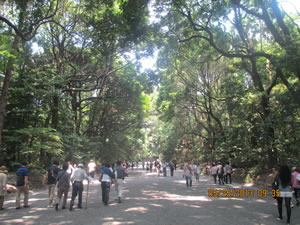
The Beauty: Visited a Shrine with Professor Stanton. Still some of the most beautiful sites I have ever seen. Around the shrines one cannot help, but to feel at peace.
Our Japanese language classes have made huge jumps this past week as we have all started to understand the basic sentence structure and ideas behind the language and are having a huge amount of words thrown at us. We have had a large amount of verbs, adjectives, and nouns introduced to us that we must memorize and this can be very challenging, but learning is still very fun as we walk around trying to name random objects and make simple sentences out of everyday things. Learning Japanese is very difficult to do, but I believe we are getting along pretty well as we are able to ask clerks to ‘heat up our food’ and I have successfully told the reception desk that ‘my key is locked in my room’! I may not be amazing at Japanese, but I can definitely make coherent sentences that the Japanese understand. One thing I did that made me very happy was that I managed to a sign on the subway. While I do not know all the words, I recognized the kanji (symbols) and understood that ‘this door would open when we arrive’. We also had a 30 minute conversation in Japanese with our Japanese teachers and while I did not talk in complete Japanese, I am very proud of the conversation I managed to keep and the fact that I could understand what my partner was saying in Japanese. I have come a long way in two weeks and I look forward to this last week of Japanese classes.
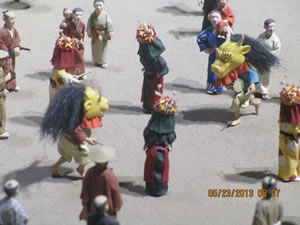
Edo Tokyo: Visited the Edo Tokyo Museum with the NJ group. Learned about the “Edo Period” of Japan and got to see plenty of tiny replicas that were amazingly detailed.
As we enter this final week of orientation I feel rather confident in the science I have learned. While I certainly do not know all of the answers to Carbon Nanotubes, I would say I have a general grasp of quantum mechanics and semiconductor science. There are still many questions that I have, but I they are mostly more advanced questions that will only be understood with time and more focused studying. These questions include discussion of the wavevector, reciprocal space, brillioun zones and some of the complicated science behind carbon nanotube theory.
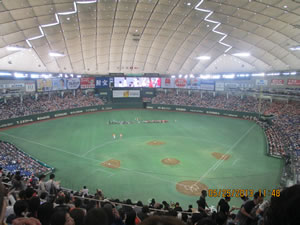
Japanese Baseball! : Went to a Japanese Baseball game with Professor Stanton and Michael. Was my first Baseball game ever and I have to say it was pretty awesome with the intense chanting and intense Tokyo Giants Fans.
Upon arriving in Minami Sanriku, all I could think about was how beautiful the area was. The trees were green and tall, the ocean was beautiful from a distance, but the lack of buildings and life was a shock. The place looked incredibly peaceful with mist covering the tree tops and birds chirping away. It was hard to imagine that such a violent event had occurred. However, seeing the kindergarten kids that morning was one of the greatest moments of this trip so far. I like to think we were all tired and ready for a break, but seeing those cute little creatures was such a happy thing. Watching them smile and throw paper airplanes was such a relaxing event that brought smiles to everyone’s faces. When we visited the elementary school and gave them the small challenge of building a bridge out of toothpicks, I was surprised by how well my group worked together. One of the members completely took charge of the group and drew diagrams and instructed the group of what to do. I had originally thought that this challenge would be rather difficult for elementary students, but my group completely surprised me as their bridge could hold a textbook! Afterwards, playing with them was so much fun as we learned how to play “Japanese Dodgeball” which is much more violent and exciting than “American Dodgeball”. We also played with them Sunday morning for several hours and had an amazing time! They were a lot more athletic that I imagined elementary kids could be and it was very memorable spending time with them. Finally, we spent our Saturday night with the older men. We ate with them and I could feel that they enjoyed our company even though we struggled through our language barrier. They kept telling us how grateful they were of the “Americans” who had come to their aid after the Tsunami. Our last night with them, and the rest of the NJ group, was a great time as we continued to have a good time through the language barrier.
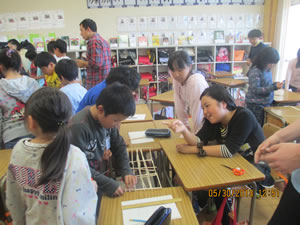
Our group of elementary kids were crazy smart. I think they did a better job than I could have!!!!
Picking a part of this trip that had the greatest impact on me is a very difficult task, but I would have to say that I enjoyed playing with the elementary students on Saturday the most. The children were so excited to see us and all of the NJ and KIP students were running around smiling with kids. Everyone was smiling, laughing, and having a great time. Everyone has heard how “children are the future” and Packard-sensei often told us about how there were few ‘young people’ in Sendai and Minami Sanriku. With the disaster, one feels that Minami-Sanriku would never come back after losing so much life and the fear of going back. However, seeing these children allowed one to see the future of Minami-Sanriku. The children and their families are facing large obstacles as they try to rebuild their town, but I imagine that the children’s happiness keeps the town moving forward with a smile on their face. Seeing the children’s happiness let me see the future of Minami-Sanriku and the world.
After seeing the site of 3/11, I have learned about the people of Japan. I see how similar they are to us in times of need and how we are all still just ‘humans’. The kids, were kids, and played plenty of sports with us without a care in the world while the older men seemed to be lost in their hometown. It is very sad thing to see, but I know the Japanese will be strong and build the home that they lost. They are hurt and down, but are resilient and will rebuild their town and be happy. Although it has been 2 years since the earthquake, the town still looks pretty damaged, but I do think it has made plenty of improvements. Professor Stanton told us how the site was covered in trash last year, but now it was very cleared out. We could see workers fixing roads and the construction of buildings taking place along with a small center for shopping. These small things may not be a large thing compared to the city of Tokyo, but I am confident they mean the world to the townspeople. Homes are still not all repaired, but that is expected and although many are living in temporary housing, building houses is a large feat for such a small town. In order for Minami-Sanriku to make large gains, this area will need a lot of help from both Japan and foreign countries. While money and labor is always appreciated, the small cards and banners I saw from foreigners to the locals seemed to be strong in meaning. Everyone knows that donations and workers will help rebuild the city, but I believe that attention and affection given to the people will help them the most. The old men we visited seemed to be so relaxed when they were with us and I believe that affection from others is the best gift they could receive.
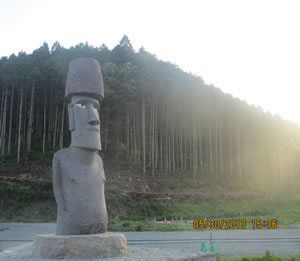
A monument given to Minami Sanriku for a previous tsunami. It was still up near the marketplace.
After seeing the destruction of Minami-Sanriku and how sad the old men were, the one thing that kept me hopeful was the smile on the children’s faces. Maybe it was their ignorance that kept them blissful, but I believe that in time the young will rebuild their home and keep the memories of their home. Even through all the destruction, they will have the memories of what once was and will rebuild the town to be something better and new. With the strength of the young and the kind souls of the old, Minami Sanriku will get through this tough time and be strong once again.
Interacting with the KIP students was one of the best parts of NanoJapan. While the events we had were not always the most exciting, hanging out the KIP students was awesome and I believe we all made some good friends. We got to talk about the differences between Japan and America whether it be the differences in Universities or the differences in how we order food. By hanging out with the KIP students, we were allowed to learn about the Japanese culture. Whether it be the Minami-Sanriku trip or going out to eat after one of our meetings, having conversations with the KIP students was always fun. They also translated our conversations with the men and children in Minami-Sanriku and kept everyone smiling whether it be the kids laughing in awkwardness or the men laughing at our bad attempts of “Ray ‘des’” or “I am Ray”. The KIP students helped bridge the gap between our stay in Tokyo and Japanese culture.
On my first day, I was both nervous and excited to begin working. I was really excited to finally meet my labmates and work on my research, but I was super worried that I was not smart enough to actually be useful to the lab. I woke up earlier than needed that day as I had to meet Hasdeo-san (one of my labmates) at 8:30, so we could walk to the lab together. He came early as well and we took the campus bus (for free) up the massive hill to the Tohoku University campus I would be working at. We were about 30 minutes earlier than everyone else (who came in at 9) and he showed me around the building and showed me to room. Soon Saito-sensei came and I met with him to discuss what I would be working on, and the best way for me to complete my research. Afterwards, I had my first lessons from Hasdeo-san and Thomas-san. They taught me some different things about physics and math and during the down time, I worked on problems they had given me and read up on some physics. I met with Saito-sense and we discussed what I’ve learned and then I headed home for that day. After my first day, I felt like I could fit into the lab. Everyone was super nice and bent on helping me learn the physics behind my research project. I felt invited to work in this lab and was excited to come to the lab the next day.
To be honest, I am not sure who my official ‘mentor’ is. Saito-sensei has assigned every student of his lab (about 5 ) to teach me for two hours every week and to answer any questions I have. While I have mostly been involved with Hasdeo-san who has helped set up my stay in the lab, I have interacted with all the other members as they answer my questions and teach me different things. All of the students are really nice and seem very interested in answering my questions and explaining different concepts. They are all assigned to teach me different topics whether it be programming from Mizuno-san, physics from Hasdeo-san and Nugraha-san, or math and carbon nanotubes from Thomas-san and Tatsumi-san. Lastly, I have met with Saito-sensei every day for about an hour, and his lectures have really helped to cement the physical observations behind the mathematics I have been learning. He paints an image of what is happening and shows the importance of different physical observations. Interacting with each member of the lab is what Saito-sensei wanted for me and it has really helped me to learn a lot in this past week.
Luckily, each member of this lab speaks great English and the language barrier has not been a problem at all. Of the 5 students that teach me, 3 are international students with two from Indonesia and 1 from Brazil. The other 2 students are Japanese, but speak well enough English that lets me understand them easily. My inability to speak Japanese will not be a huge problem as most of my lab mates are barely learning Japanese and the Japanese students (and professor) speak English very well.
During the research internship, I will be living at Urban Castle Kawauchi which is rather close to my lab and is home to international students. The fact that most of the students are international makes the dormitory an interesting place to live as we interact with nice people from all over the world. After living here a week, we (the other NanoJapaners and I) have been invited to a cooked dinner twice and everyone treats us so nicely. A group of dorm-mates even took us out on our first night to show us around Sendai. Living here has been as expected and getting to my research lab is a hike! My lab is located at the top of a giant hill and so walking is hard as you have to walk up, up, and up. While there is a campus bus that runs at set periods to take you up the hill, I have been walking since the weather is nice and the walk is beautiful (surrounded by trees and flowers). While it’s a 40 minute walk up (and 20 minute’s back home down the hill), I have enjoyed the walk, but have managed to take the bus if I don’t feel like hiking.
My research project given to me by Saito-sensei is to describe the transfer of heat though a carbon nanotube using a simple model. This simple model consists of representing atomic interactions through elastic forces. This means, I want to model the atoms of a carbon nanotube as being affected by forces directly proportional to its displacement from equilibrium. It is hopeful, that I can create a model that successfully describes the transfer of heat (and energy) from one end of a carbon nanotube to the other end. If I can create a successful model, we may have a better understanding of the properties of a carbon nanotube which we can use to our benefit in new technologies.
Since this is a theoretical project, I will not be using any fancy equipment to test the carbon nanotube, but will be using books, math, the help of my labmates, and Mathematica to attempt to simulate heat transfer in the carbon nanotube. Since I will be using a mathematical model that is based on elastic atomic interactions, I need to understand the differential equations of oscillators and the physical meaning behind the solutions. I have also begun studying the infinite model of oscillators which we use to model a 1D string of atoms. These models should hopefully help me to understand phonons in the unit cell which I can later use to construct a theory for carbon nanotubes. In order for me to begin a model useful for studying carbon nanotubes, I will have to understand the simpler case of atoms in a lattice. I have begun studying these vibrations and I am beginning to understand them more and more. However, I will eventually have to make the jump between 1-D simple model of atoms to a 3D representation of a carbon nanotube.
Before I can move any further, there is a lot that I will have to learn. I will have to gain a better understanding of these physical models and understand the transfer of energy in the simple crystal lattices. I will have to learn more difficult math to further my understanding of these models and I will have to learn a lot more about the carbon nanotube’s structure and properties. All this knowledge will come in time as I continue to take lessons from the members of my lab and study on my own. A last major challenge is learning how to use Mathematica. I have no background in programming or Mathematica and I will have to learn to use this program to successfully model anything I want to. I have learned a little bit this past week, but I will have to learn much more if I plan on doing anything useful with Mathematica. Learning to program is one of my major challenges as I do not know much about it, but will need it to model the physical phenomena I am studying.
While there are no significant experiences that come to mind when I think of miscommunication with Japanese, there have been many situations where I noticed small differences in our everyday conversations. One example that quickly came to mind was when I was talking to one of the KIP students named Teppei. Teppei hung out with the NanoJapan students quite a bit. His English was great and he always brought a great time when he was showing us around Japan and helping us cross the language barrier. However, one thing that I noticed was that Teppei was constantly bowing and nodding his head. We would be in the middle of a conversation, relaxed and laughing and he would still manage to bow over and over again. Then one time, I asked Teppei why he would bow so much. I couldn’t imagine why he would feel the need to bow so much when we were all just laughing and having a good time, but Teppei explained that he would bow so much because he did not want us to be angry at him. This just seemed absurd to me since how could we be mad at him when we were all just friends having a good time. For some reason, Teppei just felt the reason to make sure everyone was happy whereas none of the NJ group was worried about bad feelings.
Another small thing that happened during language classes that shows the differences across cultures was when our Teacher was teaching us vocabulary. She was teaching us verbs and this verb so happened to be ‘to eat’. She had already showed us the verbs and she was reviewing them, but when we could not recall what the word meant, she tried to act out the verb. The funny thing is that when she acted out ‘eating’ she moved her fingers like chopsticks, whereas we would have chosen to move our hands like a spoon or fork! After noticing it, I thought it was so funny how another culture had a completely different motion associated with the simple every day task of eating. Above this small thing, there must be a whole bunch of small everyday things we do not notice whether it be the finger chopsticks to symbolize eating or driving on the left side of the road. I just thought it was so funny how small little things could represent their entire lifestyle and how they grew up.
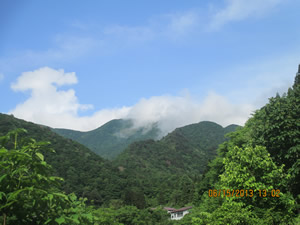
Omoshiroyama: Went hiking with Lila and Michael at the ‘Interesting Mountain’!!
Research Update: Going into the third week of working at the lab, I have begun studying the relationship between temperature and vibrations. I spent the first two weeks learning a bunch of math and science that I would need to begin working on my model of heat conduction. The objects I had previously studied included methods to solve differential equations, learning about mathematica (to simplify calculations and make graphs), and studying the coupled oscillator model of atoms. I’ve gained a strong understanding of the oscillator model and am now attempting to relate this model to the heat equation. The derivation of the heat equation and its relationship to energy density and the diffusion equation is what I spent most of my second week learning. I understand the derivation very well as well as its application in bulk materials, but I am having trouble visualizing the model in a 1D string of atoms. I also spent my second week working studying some basic statistical mechanics. I learned about the partition function as well as the Plank distribution and how it applies to phonons in solids. I also began studying the Debye model as I believe this contains hints in relating conduction to a phonon model. However, Saito-sensei seems to be pushing for a classical method void of ‘h-bar’ and any quantum mechanical equations. I hope to attempt to build this relationship using the Equipartition theorm and relating the theorem to the energy of the oscillators.
Saito-sensei seemed to suggest that I could relate the heat equation to the energy of the atoms vibrating, but I cannot find this relationship. When I think of the heat equation, I imagine bulk materials and heat transfer occurring with both time and space in the material, but in a 1D object I do not know how to treat ‘energy density’ and the spreading of energy in a linear chain of atoms. I am beginning to doubt that this relationship can be built classically.
This 3rd week, I have been attempting to build a relationship between phonons and heat conduction. This week, I started with the simplest possible model which consists of two atoms. One atom is connected to a wall, while the second is free to move. My initial conditions place the wall as resting at ‘zero’ temperature with no vibrations whatsoever. The middle atom is surrounded by two springs (which govern its motion), but it starts from ‘0’ temperature as well with no vibrations. The rightmost atom is allowed to move freely and its vibrations will correspond to its ‘temperature’. I give the rightmost atom any temperature (T), and relate this T to the amplitude of motion in the rightmost atom. I use the relationship that relates ‘KbT’ to the potential and kinetic energy in the spring. I then use a set of differential equations to solve for the motion of the middle atom (as it’s movement is determined by the oscillations of the right most atom). We can then solve for the amplitude of middle atom’s movement using the system of equations. We can then relate the amplitude of the second atom to its motion and use the equipartition theorm to determine the ‘temperature’ associated with its energy at a specific time.
I then plan to use a best fit to the general solution of the heat equation to solve for constants that best represent the data. For the best fit, we will have three points: the right most atom fixed at the initial temperature, the middle atom’s temperature at a given time, and the wall at zero temperature. This should hopefully allow for a best fit graph that can allow us to determine the constants of heat transfer.
I know that this model is pretty bad and needs a lot of work before it gets anywhere, but this is what I have been working on the first two days of my third week. I plan to work on a generated graph on Wednesday as well as extending the chain of atoms, which will give more data points for the best fit graph. Another way to obtain more data points would be to observe points at many different times. In order to improve the model, I want to begin studying phonons in more detail as they pertain to quantum mechanics. I also need to find a way to relate the temperature of the atoms to the vibrations. I did this with the equipartition theorm, but I do not think what I did was correct. There must be a better way to connect temperature to phonon modes and the vibration of atoms.
For this week, I plan to continue working on the 2-atom model and want to see if I can find a better way to relate heat to phonon modes. I want to continue learning more about phonons and their properties in quantum mechanics. I will continue to work with Hasdeo-san to build this model and attempt to improve it. I also need to begin learning more about carbon nanotubes and their respective properties.
Working in Saito-sensei’s lab has been very awesome so far, but I do not think I would go so far as to call it a complete Japanese lab. Saito-sensei is a theoretical physicist and so we have no giant machines or big scientific devices, but instead use our heads to create theories that match physical phenomena. His team is pretty small with only five students which include 2 Indonesian students, 1 Brazilian student, and 2 Japanese students. With me there that makes 4 international students and only 2 native Japan students. Even though the lab is not very Japanese, it is still very international and it has been a great experience. Although I have learned about Japanese culture, I have managed to eat Indonesian food for the first time while comparing my Spanish to Brazilian Portuguese with discussions about every day events. There is still a language barrier as I sometimes have to speak slower for my international lab mates, but English is definitely the most-used language, and I am sometimes surprised when I hear Saito-sensei speak Japanese because I am so used to him talking English to every one of the students.
Even though this lab is mostly international, I have still had the experience of working in a very Japanese place. While I cannot compare working in a Japanese lab to a U.S. lab, I can note the similarities and differences in the work place. Firstly, I’d want to say that the workplace is very similar. Everyone receives respect from one another, everyone speaks to Saito-sensei with upmost respect, and there is a pretty calm atmosphere among the students. However, I have noticed that the ‘atmosphere’ is very different between the Japanese and International students. When I am with the other international students, there is a very relaxed feeling and we laugh and have fun while working, while the Japanese students (while just as awesome) always tend to be a little more tense and focused on work. This may be the language barrier, but I have noticed that Mizuno-san and Tatsumi-san tend to be a little more serious and a little more timid when I work with them. When Hasdeo-san or any of the international students teach me, they are very kind, humble, and not scared to make mistakes, but the Japanese students tend to always be worried about being perfect. I always try to have a relaxed mood when the Japanese students teach me, but they always seem to be in an awkward stage. However, whenever I meet with Saito-sensei, I would not pick him out of any professor from the United States. He is very intelligent, very interested in teaching, and a little demanding, but it only makes him a great teacher. I have never felt out of place with him, and I like to believe that we are both pretty relaxed when we have our 1 on 1 meetings.
If I had to pick an anecdote that best describes my experiences at lab, I would choose my first Thursday at the lab. Every Thursday the group has their ‘group meetings’ where some of the students will give a presentation on what they had been working on. On my first Thursday, two of the grad students were presenting. One was giving a normal update while the other was presenting his Doctor’s Thesis Defense. Both gave great presentation and I was especially surprised by the Doctor’s Thesis Defense which was very well presented and included a large amount of information, but Saito-sensei tore them to the ground. He took every part of their presentation and critiqued it. It was interesting to watch how he had noticed so many things in their powerpoints (that were obvious mistakes), but would go unseen by any normal viewer. These were not large mistakes like misspellings or bad spellings, but the tiniest of tiny mistakes like the wrong subscript on a variable (covered in lines of equations). While Saito-sense did seem a bit harsh, he greatly improved their presentation and really did teach them new things that they would use in presentations down the line. However, after these presentations the students and Saito-sensei hurriedly ran downstairs to play ping-pong. They play for a little over 2 hours with plenty of excitement in the middle of the workday (and I must say their way really good compared to U.S. players). After the two hours of playing, and everyone was covered in sweat, they made their way to the upstairs kitchen where we made rice cakes and laughed over drinks and Saito-sensei playing the ukulele. We stayed at the lab till like 8:00 that day and had stopped working around 3:00. It was so much fun to watch this small group hangout on a Thursday night and the best part was that this happened each week. What I got out of this, was that we had to work hard and Saito-sensei would do his best to teach what he could, but we were going to have a great time together.
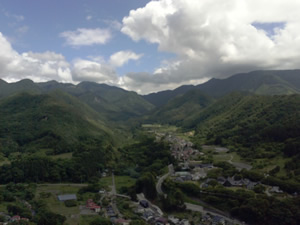
Yamadera: Yamadera: Day trip to the Temple on a Cliff
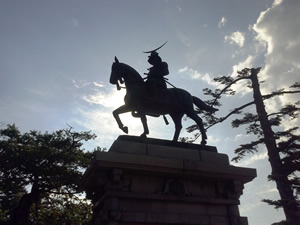
Aoba Castle:
Got to See the great Samurai of Sendai!
Research Update: I had spent the first few weeks learning a lot of scientific information and it has now become time for the application of what I’ve learned. So, I spent this past week working on a simple two atom model and how I would relate the vibrations to the heat equation. This is very simplistic model that can hopefully be up scaled later on to meet the needs of a CNT model. This model includes two atoms connected by springs with one being connected to a fix wall and the other being to move freely.
Now the ‘wall’ is fixed at 0 Temperature with no vibrations, the red atom is initially at 0 Temperature with no vibrations, and the purple ‘atom’ is initially at resting position, but is at a non-zero temperature which translates to vibrations. These vibrations will create a spring reaction force that causes the red ‘atom’ to heat up as well. For the time being, I have imagined that the purple ‘atom’ is not affected by spring reaction forces and that the wall does not gain temperature (or begin to vibrate). I relate temperature to vibration using the equipartition theorem and E= kbT= 1/2 kA2 (A-amplitude,k-spring constant). This allows us to determine the amplitude of vibration of the purple atom which will drive the red atom’s vibration. We then use compounded oscillators to solve for the motion of the red atom which can transfer to a specific temperature through the equipartition theorem as well. We now have Temperature values of the ‘1D solid’ at various x and t points. We can find a general solution to the heat equation with specific boundaries and fit the data to the different Temperature values we have for various points in time. This allows us to solve for the ‘thermal diffusivity’ constant in the heat equation which help us to analyze the thermal properties of the material.
I did this process and managed to obtain various constants as a function of time. Although the values have inappropriate units, the process through which I got there may be useful. Some major problems I am having with the project is the translation of Temperature to vibrations of the atoms. I also have some difficulty picturing the ‘chain of atoms’ and a bulk metal for the heat equation. Another major problem is that the Temperature value I obtain is imaginary which makes no sense. For the time being I have been taking the absolute value of Temperature. I do not know what ‘complex temperature’ would be and this may be a problem in the long run. The next steps I need to take include extending this model to an infinite chain of atoms and later applying the model to carbon nanotubes. Although lately I have been working on a powerpoint presentation I must give this Thursday.
Also, I have been trying to learn about phonons in graphene and Carbon nanotubes, but have had some trouble picking up the stuff. Are there any recommended resources? Or maybe we (Professor Stanton and I) could skype to talk about this junk. I also am debating whether to look into the quantum mechanical side of phonons, but this is rather difficult.
The biggest accomplishment that I can think of outside of research and learning has been the picadillo I made one night. Now, I’ve seen my mom cook many times, and helped my parents with preparing meat and starting the grill and all the behind the scenes work of cooking, but I’ve never actually ran the whole thing on my own. So picadillo is a pretty famous (very easy to make) Mexican dish that only involves ground beef, potatoes, and a crazy amount of spices. I knew that it wasn’t very hard to make and since I had to learn to start cooking in Sendai, I decided I would try to make it. I made a run to “Seiyu” (our local grocery store in Sendai) and bought the spices that I could to make the meal. (after asking my mom what to buy!) I had to settle for red instead of green bell peppers (OH NO!) and there was no ‘cilantro’ or lime to add to the mix, but I figured I would be just fine. So on my own, I randomly put things together (how I had though I remembered my mom doing it) and it worked out pretty well! This may not seem like such a big deal, but I have never really actually cooked on my own and for my first time, the meal worked out pretty well. I ate it with bread (as I always did back home) and it was a great dinner that I knew I could make again. While it sure wasn’t no picadillo that my mom would make and there wasn’t any tortillas to go along with it, but was great for the time being!
When I think of all the challenges I have faced while being in Japan, all I can think of are small details that made my life a little bit harder. These small things are things like crossing the language barrier when we go out to eat, or having to prepare a decent report for Saito-sensei after a week of little progress, and these things are nothing large. While there are many small things that I have to go through every week, I would say that the grandest of them all would be the simple task of being more responsible. Since being here, I have had to take up responsibility whether it be cooking for myself after a full day of work, planning to buy groceries, or washing clothes on a weekly basis. While I did all of these things while in school, everything seems to be in a much larger aspect since I’ve came here. When I was at Rice, everything is pretty much laid out for you and you simply follow the instructions that everyone sets up for you, but here in Japan I have had to be much more organized and attentive to the things around me. On top of these things, I have had plan my time according. I can’t be going to sleep at 2 in the morning like I normally do during the summer if I want to be awake at work. I have also had to make my own personal goals for my project and preparing myself to attend work. I have had to gain my own drive to do these things and along with the little responsibility I have gained in the past couple weeks these two things would be my greatest challenges. I have had to grow up and learn to find my own passion in the work I am doing.
I am decently happy with where I have progressed with my research as I understand that theory is a difficult thing to make progress in with a only a first year education. Not to be negative, as I have learned a lot about many different things. Beyond learning much about physics, I think I have learned a lot about how to think and appropriate approach problems, which is probably much more important. There are no giant issues with my project except that it is a difficult project and creating theory is not easily done in two months. I am still very proud of the simple model I have been working on these past couple weeks and I hope that I can put this model to work, or at least generate some decent results that Saito-sense or his graduate students can use for further research later on.
Although I am not taking any formal language classes, I like to think that I am still studying the Japanese language. I cannot say that I have learned more since I our three weeks in Tokyo, while I can definitely say I forgot some words, but I feel that I am gaining a bit more of an understanding for the language. I hear the language all around me and I have learned to pick out different words and notice breaks in the language. I have also learned a lot more Kanji than I had imagined I had. From the various strips that we have taken around Sendai, to asking my mentors for help, I have picked up a generous amount of Kanji that I can normally recognize and sometimes read. I have even made random observations of the same Kanji in names and buildings that would seem totally unconnected.
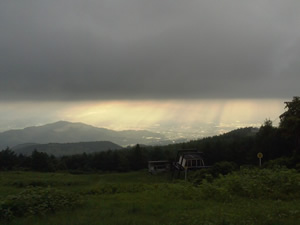
Mount Zao: I visited Mt. Zao with the Sendai group and we had a pretty great time along with getting loss in the surrounding woods!
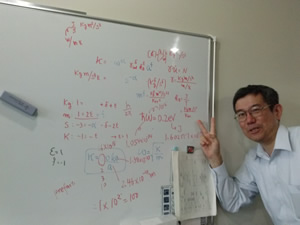
Meetings With Saito-sensei: Everyday I meet with Saito-sense and we talk about different parts of my research. I always manage to take a picture of the white board after our discussions and he managed to jump in in this one!
Research Update: This past week, although Saito-sensei was absent, I was instructed to build a presentation for the graduate students. The presentation was last Thursday and I spent a large amount of time on Monday and Tuesday working on images and animations for the presentation along with the actual construction of the powerpoint. I practiced a little bit, and gave a very relaxed presentation on Thursday to the graduate students. Since no Professors were there, it was a very relaxed presentation and I basically just spoke a little bit about my research to the graduate students (who had taught me much of what I presented).
Towards the end of the week, I continued to work on animation and programs in Mathematica that would help describe atomic vibrations in a 1D solid and continued to study phonons and properties of CNTs. Hasdeo-san and I then began to discuss how we could move our simple model to describe heat transfer in CNTs and we came upon several problems. Several conclusions we came to, would be that low frequency phonons would be involved and we would have to find a way to relate all these phonon modes to heat transfer. Upon looking for more details, we ran into two papers which dealt with the problem of conductivity in 1D nanostructures and CNT’s. These papers used the same model which dealt with analyzing the energy current in the structures with phonons and then using the dispersion relationship to solve conductivity. This seemed like a very well thought out plan and an idea we had been considering but the method had a large amount of quantum mechanics and was quite difficult for me to understand on my own. On my own, I want to begin studying quantum and classical transport equations in materials since I think these may later be applicable to this problem. For specifics, some of these theories I want to study are Boltzman Transport and Liouville Transport which can be used to describe phonon and electron transfer in solids. If we can use these to describe the motion of phonons in the solid, we may be able to associate an energy current with the flow allowing for a calculation of thermal conductivity and a deeper understanding of energy flow in the carbon nanotube. I hope that I might be able to use this for my project, but I feel our deadline is coming soon and I may not have the time to learn much about these transport equations in time to apply the.
Entering this week, after talking with Saito-sensei, we have continued to analyze our simple model for 1D solids. We have been able to generate a program that can determine the temperature of the atoms (in a 1D linear change) . We have successfully determined these and are now determining the gradients across the solid along with trying to fit appropriate constants for mass, lattice constant, spring constant, etc. After discussion with Hasdeo-san, we may have found a method to analyze the thermal constants of the material. We plan to give this method a shot on Wednesday before I leave to Okinawa in hopes that we can fit these data to real values. The idea revolves around analyzing the Temperature as a function of time and relation its derivatives through the heat equation independent of position, since position is simply a function of time due to the oscillations of the material. A next goal is to expand this method to a more general case with non-ideal initial conditions.
Mid-Program Meeting Overview: The Mid-Program Meeting ended up being a lot of fun, as expected, but we were able to learn much and see large amount of various science. OIST was a very interesting institute to visit as the school seems to have a very large focus on science and only science. The fact that OIST was only a ‘graduate school’ made the institute just as interesting as I do not think I have ever heard of a ‘only graduate school university’. OIST is also a very international school and the amount of different nationalities we were allowed to see in 4 days was amazing. The intense amount of focus on science was also amazing as I did not see any hint of liberal arts study, but I believe that the interaction with international students would provide an excellent method of pursuing a liberal arts education in addition to a science specialization. Touring the labs was also very interesting as we were all surprised by the amount of technology such a young institution could have. The intense amount of technology available to the students is a strong representation of the funding this school has which must be HUGE! The school was so nice whether it be the architecture, the island itself, or the elite faculty we were introduced to and it was strongly apparent that this school will grow to be a very strong graduate school. While I cannot compare graduate education between the U.S. and Japan, it is obvious that OIST offers very strong program in many fields and they are definitely on my list of things to look into. I can’t quite commit to a graduate school as I am starting my second year, but they have definitely caught my interests if I would like to attend graduate school abroad.
Besides the introduction to OIST, being back with the NJ students had to be the best part. Whether it was the playing late night soccer or sumo wrestling each other, hanging out with the gang again was the best part. Even though I was lucky enough to be placed in Sendai with Lila and Michael, being able to see everyone was great. One thing I would recommend for future years, would be to reduce the amount of scheduled events and make more room for just being together. While all the events we went to were great, I like to think that the majority of the group is pretty tired by this point and we just want to relax and enjoy one another’s company on a ‘tropical paradise’ (as one presenter put it). One awesome idea would be to host the actual meeting (the two hour talk) on the beach with everyone sitting in the sand or beach chairs. Above all, I would definitely say to host the program again in Okinawa, but I may be biased as I love the beach, but I do think that Okinawa provides an excellent opportunity to relax the students (from the stress of research) and get them rejuvenated to plunge through 3 weeks of heavy work. At first, I was a little nervous about the meeting itself, but it ended up being a great talk with the rest of the group. Above all, no matter where the meeting is held, I think the NJ students will enjoy being with one another the most and that’s all that matters.
Reflections on Japanese Culture & Language: NanoJapan has offered a great experience for me both in the lab and in the Japanese culture, but one thing that I have not been able to practice extensively is the Japanese Language. While I am very interested in learning this language, my lab has little Japanese members and I mostly interact with international students which speak amazing English. Therefore, the only place I have been allowed to practice Japanese has been out in the city, but this mostly involves pointing and waiving to get the message across as opposed to actually learning the language. I haven’t had much opportunity to practice the language as I am not always required to need the language to get the point across, but I surely do know some basic words and sentence structures that can help me get across in everyday life. Another thing that I study on my own (as I walk through the streets alone) is assigning sounds to the different kanji and asking for the meaning of the specific kanji. However, I still know very little Kanji, but am decent enough at recognizing kanji for getting the Sendai Crew back to Sendai(仙台) from Yamagata(山形). One funny thing is that a large group of Vietnamese students recently moved into our dorm for the purpose of studying Japanese, but these students understand no English at all. So conversation between us has been very limited, but as they continued to learn Japanese, we have been able to carry small conversations and get messages across through Japanese! I personally think this is great as we can communicate through a language that belongs to neither of us.
After being introduced to Japanese culture and language, and living in the country, I am extremely interested in pursuing this language when I return to the United States. Although this may be very difficult to fit into my school schedule, I would very much like to take Japanese classes at Rice, but this may be hard to fit into my schedule. I also know that there is a Japanese Student Association at Rice that I would be very interested attending once in a while. I could hopefully practice a little bit of my Japanese and maybe even learn more along with eating some good food!
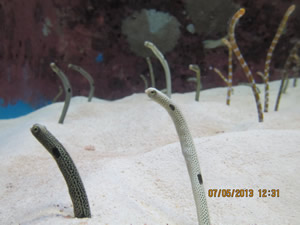
Aquarium: I was super ‘geeked out’ to visit the Aquarium!
Research Update: This past week I continued to work on the simple linear chain model and have began to connect the model to macroscopic relationships (the heat equation). I managed to calculate the theoretical diffusivity for set parameters, but this is only for a very special condition. These initial conditions involve the tube and left wall being at 0K initially with the rightmost wall at any temperature. Our given results and Temperature plots seem reasonable, but I have spent this week trying to create a general model that will take the tube and left wall at being at reasonable temperatures. It is this part that I have been having a rough part with. For some odd reason, the temperature of the center atoms fall to 0 within a small amount of time. I believe that the central atoms fall to 0K because the fall to equilibrium as they are not driven by an outside force (causing the equilibrium temperature). I also believe that the damping values I have in the springs may be inappropriate. I want to study both the damping constants and the equations of motion for each atom as I believe there are problems somewhere.
I have also been asked to begin preparing a second presentation for Thursday that will present both my life in Sendai and my research. This will hopefully be the presentation I give in Tokyo and I can use this chance to build a strong background for research poster. This weekend, and following week, I plan on working on my poster and abstract. I will have to look up some recent papers on thermal conductivity and do some personal thinking for preparing a decent argument.
Before today, I had no idea what I was going to write about. Arguments don’t generally happen in our lab, and everyone speaks very good English, so the language barrier is rarely a problem. However, today we had our group meeting and while all the presentations were well, Saito-sensei was very disappointed in Tomas-san for failing to plan the farewell party. Saito-sensei went on to scold the rest of the group on the importance of planning and how we should take responsibility. While it was not a very drastic moment for everyone, after Saito-sensei left the room I was allowed to see the group work together and bond to help Tomas-san out. So Tomas-san was in trouble for failing to take initiative on planning a group dinner, but afterwards the entire group decided to work together to get Tomas-san out of the gutter. However, the lab group did not just do the work for Tomas-san, but instead guided him through the process. Now Tomas-san had never planned a party for the Saito group and the Saito group parties tend to be a little bit different than normal parties, and while he did not know what to do, the senior members made sure to help him out.
While I didn’t help much (as I knew nothing about planning the parties), I thought it was great to watch the senior students and one Japanese student help out Tomas-san through his ‘challenge’. They told him what the parties are like, what he should look for, and what to say to Saito-sensei when he reported to him later in the day. The teamwork that I could see in the 4 students was a big sign of the bonds the 4 theoretical physicists had with one another. While Saito-sensei’s scolding may have been a little harsh on Tomas-san, it definitely showed the closeness between the group members and how they were interested in helping one another through the problems. After seeing how they worked through the problem today, I would be happy to be part of their lab, or any lab, so I could have the support and friendship of intelligent and good-hearted people.
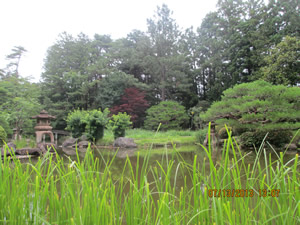
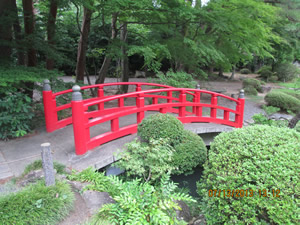
Japanese Garden: Spent the weekend by myself seeing some of the beautiful temples in Sendai I had failed to see and I didn’t realize it was so pretty
Research Update:
This past week has been very difficult to get through. I am seeing little progress in my model as I try to expand it to the general case and after making several alterations to improve the general case, the special case has lost its physical importance. I do not think I will be able to take the model to the general case by the end of the program and will have to present the special case (of CNT at 0K and very low temperatures), but I can hopefully obtain reasonable answers. I also want to spend some time deriving thermal conductivity approximating the Temperature vs position function, but will have to ask Mizuno-san for help with this programming. I will also have to find data to compare my model with, but few papers seem to be interested in Thermal diffusivity, preventing any validation of my results. The fact that it is at very cold temperatures also makes validation more difficult to reach, so I do not know what I can compare my research to in the poster. I have begun working on the poster and have a reasonable status for my introduction, but I do not know what results I will be wanting to show and will have to ask Hasdeo-san for help on what to do. We are approaching crunch time here and I do not know if I will be able to provide very reasonable results. I will have to talk to Hasdeo-san and ask for his opinions on several things including results, comparisons, and what to include on my poster. There are still many gaps in my model including damping, non linear equilibrium, and an appropriate frequency of vibration for temperature. I can hopefully analyze these things by the end of next week to have appropriate answers!
No Career Interview
Research Update: This last week as been filled with much of the same stuff. I continue to work on fitting parameters to the data and am still having trouble. I recently settled on trying to solve for the simple case only hoping that it would provide an easy transition to the general case, but I am having some trouble obtaining a linear graph expected in the solid. I think that the final temperature distribution will not be linear. Today, I began looking into ways to improve the damping factor in the springs and ways in which this damping factor relates to the true values. Hasdeo-san has recently finished his Master’s defense so I am hoping that we can work a lot over these last couple days I have. I believe we can come up with something very soon if we work hard enough. I have still failed to get decent results. Another problem I have ran into is that we are calculating thermal diffusivity and we do not know how to compare this to other experimental results or theoretical results since they normally calculate thermal conductivity. This may be small and we can hopefully find a way to compare this to other works.
When I first found out that I would be living in Japan for an entire summer, I really did not know what to expect. I had had all my family and friends tell me how different it would be, or how awesome it would be, or how terrible it might be, but I really had no clear picture of what to expect in Japan. All I can say I knew about Japan was that it was an Asian country with Godzilla, home of anime (which I don’t watch), and had a rich culture of temples and other objects I had never been introduced to. Although I had no idea what I was getting myself into, I was excited to travel the world and be introduced to a rich culture I had never encountered. People back home will ask me what I thought of Japan and all I can say is that I loved the country, the people, and of course, the food. I knew little about Japanese culture entering the program, but I like to think that I know the culture a little bit now! I enjoy the culture, the people, and their calm way of life. I understand that they live different than Texans, and while I won’t be listing details of their everyday life, I can respect how they live and the decisions they make.
This experience has also given me the ability to step back and understand American culture. I never thought that there would be a large difference between the two cultures, and while we are alike in so many ways, some things are just blatantly different. They way Americans face problems, how we finish problems, and how we work all differ from the Japanese which are always very focused on every unnecessary subject. I think that the Japanese can sometimes get worked up over too small of a detail, while Americans can miss large details by working too fast, but both are very efficient and successful. When I compare the two cultures, I see small differences, but two cultures that have potential to be very different, but both to be successful.
Japan was a great place to spend my summer. The people were nice (so nice), the food was good, and I was with great company in Sendai and the general NJ group. I will miss living in the international dorm with the ‘Sendai Crew’, and working with my lab mates who were some of the nicest people I know. My lab mates taught me a large amount of science this past summer. They were constantly answering my incessant questions and helping me work through my meetings with Saito-sensei. They encouraged me and pushed me a lot more than they suspect and they really helped to create an interest in solid state physics and Japanese culture I had not interacted with. It will be sad to not go home and play ping pong with Michael or cook with Lila and I will miss them and touring the Sendai area with them. We spent a lot of time together and I guess they grew on me a little bit! Lastly, I think I will miss touring Japan on my free time. While my research was difficult and I spent a lot of time working, we had a lot of downtime on weekends where we would go tour nearby areas and hike or eat weird food or simply wander through Japan.
Coming in to my last week of research at the lab, I was a little bit scared as my research had not been going extremely well and I was going to have to tackle much of the project on my own as my mentors were facing the thesis defenses. While they were still giving me plenty of help, I was going to have to attempt to wrap up on my project on my own. However, I managed to finish up my work along with my poster and Tokyo presentation with help from Hasdeo-san on my last two days. We had to work pretty hard and we worked until the end, but we managed to make something out of my theoretical work (which was really hard) and made a strong presentation. Aside from my research, we had to have a going-away-party on Tuesday since Saito-sensei was leaving early the week to give presentations in Tokyo. It was a great party and I cooked a Mexican dish for the lab group while they all made their own types of food that added to a great party. This would not be last time saying goodbye to them however, and on Friday afternoon there was a small physics group party and I was lucky enough to spend my last moments with my lab mates there. I have to say it was a lot harder to say goodbye than I thought it would be. I guess I had grown attached to my lab mates over this small amount of time and I can honestly say that I am going to miss them. They were a great group of really nice, intellectual physicists and they taught me so much about physics and Japanese living.
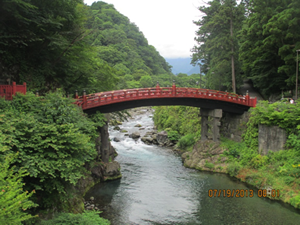
Weekend trip to Nikko
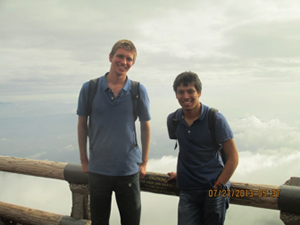
The Men of Sendai
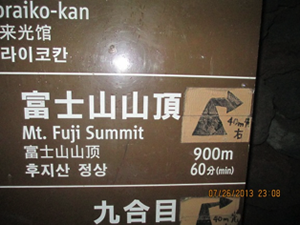
Hiking Fuji-san: Difficult, but Enjoyable
Simple Model for Thermal Conductivity in Carbon Nanotubes and Nanoscale Materials
This summer, I went to Tohoku University in Sendai to work for Saito-sensei on a theoretical project on Carbon Nanotubes and other nanoscale materials. The goal of our project is to create a theoretical model that explains thermal conductivity in Carbon Nanotubes (CNTs). We want to create this model to understand how different phonons develop throughout the CNT. We currently have strong models which explain the various phonon modes in CNTs and heat transfer in CNTs, but we want a simple semi-classical model that will explain frequency dependence of vibrational energy transfer in CNTs and other nanoscale materials. We also know that we can relate the vibration motion of atoms to heat and thermal conductivity in CNTs, providing an excellent way of predicting thermal qualities.
Since we want a simple semi-classical model as compared to a quantum mechanical project, we decided to approach solving this theoretical problem by assuming atoms connected by springs. We imagine atoms being connected by springs, but for the time being we would only consider a 1-Dimensional linear chain of atoms and could later expand to multiple dimensions and account for three dimensional interactions in CNTs. Since each atom’s motion is governed by its spring interactions with surrounding atoms, we can create systems of linear equations which can determine the displacement from equilibrium for each atom in the linear change. We can do this with a small number of atoms analytically, but would have to use Mathematica to create a program that could solve for the displacement of the atoms. We then created a program that could predict the displacement of a linear chain of atoms after a specific set of initial conditions or even with forced and damped conditions. However, we would then want to relate the vibration of atom to the temperature of any atom. We did this through the Boltzman Relationship which claims that ![]() for each degree of freedom. We could then relate a given temperature to an energy which in return related to the average amplitude of vibration in the atoms. We can use this Temperature to amplitude of vibration relationship to go back and forth between the atomic movements in their springs and their associated temperatures. We then set up a 1-Dimensional solid between two heat baths where one end is at a 0K cold bath and the far end is in a 10K hot bath. We then associate a driving force with the temperature of the hot bath that oscillates at any frequency
for each degree of freedom. We could then relate a given temperature to an energy which in return related to the average amplitude of vibration in the atoms. We can use this Temperature to amplitude of vibration relationship to go back and forth between the atomic movements in their springs and their associated temperatures. We then set up a 1-Dimensional solid between two heat baths where one end is at a 0K cold bath and the far end is in a 10K hot bath. We then associate a driving force with the temperature of the hot bath that oscillates at any frequency ![]() where m is the mass of the atom and k is the spring constant taken from experimental data. After associated a driving force with the hot bath, we analyze the flow of energy in though the linear chain. We can then associate the amplitude of vibrations of each atom with an associated temperature. This leads to a Temperature vs. Position plot that we can relate to solutions to the heat equation:
where m is the mass of the atom and k is the spring constant taken from experimental data. After associated a driving force with the hot bath, we analyze the flow of energy in though the linear chain. We can then associate the amplitude of vibrations of each atom with an associated temperature. This leads to a Temperature vs. Position plot that we can relate to solutions to the heat equation: ![]() . This leads to a general solution that we can best fit (with Mathematica) to solve for
. This leads to a general solution that we can best fit (with Mathematica) to solve for ![]() , the thermal diffusivity of the material. We can solve for
, the thermal diffusivity of the material. We can solve for ![]() and compare to experimental results to test the validity of our model.
and compare to experimental results to test the validity of our model.
In our simple model with many simplifications, we obtained a dynamic constant for Thermal diffusivity that ranged from ![]() whereas a previous theoretical work predicts a value of about 4.18
whereas a previous theoretical work predicts a value of about 4.18 ![]() . This shows that our thermal diffusivity value was off by about a factor of a hundred which is reasonable considering that we compared our simple 1D linear chain of atoms. Within the two months of research that we had, I only had time to get this far, but there is plenty of work to be done and the marginal error shows the potential in this simple model. For one thing, we could study the damping that occurs in the ‘springs’ and how this damping relates to the anharmonic effects in the solid. This is a very hard relationship to quantify due to the randomness of the solid structure, but could lead to groundbreaking results if we could establish a quantifiable relationship between the anharmonic effects to thermal conductivity. Some other factors we would like to consider would be the 3-Dimensional version of the CNT. For now we only worked on a simple 1-D system, when a CNT is actually a very complicated structure with many atomic interactions. I believe we could use a tensor to explain the spring forces and that this tensor could better explain the reaction of the atomic vibrations. We would like to increase the accuracy of this model to better explain thermal conductivity in CNT’s including the summation of all phonon modes. Afterwards we would like to study how an individual phonon mode transports throughout a solid and establishes itself in the material.
. This shows that our thermal diffusivity value was off by about a factor of a hundred which is reasonable considering that we compared our simple 1D linear chain of atoms. Within the two months of research that we had, I only had time to get this far, but there is plenty of work to be done and the marginal error shows the potential in this simple model. For one thing, we could study the damping that occurs in the ‘springs’ and how this damping relates to the anharmonic effects in the solid. This is a very hard relationship to quantify due to the randomness of the solid structure, but could lead to groundbreaking results if we could establish a quantifiable relationship between the anharmonic effects to thermal conductivity. Some other factors we would like to consider would be the 3-Dimensional version of the CNT. For now we only worked on a simple 1-D system, when a CNT is actually a very complicated structure with many atomic interactions. I believe we could use a tensor to explain the spring forces and that this tensor could better explain the reaction of the atomic vibrations. We would like to increase the accuracy of this model to better explain thermal conductivity in CNT’s including the summation of all phonon modes. Afterwards we would like to study how an individual phonon mode transports throughout a solid and establishes itself in the material.
Research Symposium in Tokyo: To be honest, I had no idea what the Research Symposium was going to be when I walked in to present as I had been mostly worried about finishing my research the previous week. However, I can say that I found the symposium to be very enjoyable and I enjoyed a lot of the scientific presentations (that I could now understand) and mostly enjoyed the NanoJapan presentations. It was very fun to listen to the 11 other NanoJapan students present on their research and their time in Japan. We were not able to see each other every day of the 3 month program, but we were able to build strong relationships with the other students and it was fun to listen to them talk about their times in Japan.
The day revolved around scientific presentations from various Japanese professors and a set of 12 presentations by the NanoJapan students. The scientific presentations could get a little long and tedious every now and then, but it was very interesting to listen to the presentations and to note that we could actually understand what they were saying! To admit, I was quite nervous to give my presentation (as I had barely any practice), but I like to think that it went OK. I think I could I have done better, but it was at least good practice with talking about my research project. Everyone else did a great job on presenting their projects and lives in Japan and it was very interesting to listen to. As the day wore on, we got to listen to more scientific presentation and they were still interesting, but managed to carry on a bit and I caught myself waiting for the last presentation to finish. Cheryl also presented and hers was very enjoyable. I’m sure she has done this presentation on NanoJapan many times, but it was very interesting to listen to some of the statistics behind the success of past students and what those students had done both during and after the program.
Re-Entry Program & RQI: The various programs that NanoJapan has is what makes the program so great. Whether it be the pre departure, mid program, or re-entry program, these programs help to focus the students on what they have learned and prepare them for what is to come. I was a bit skeptical of all the various topics we would be covering in the re-entry program, but I can easily say that I learned a ton of information from the Re-Entry Program. The information on presenting the poster was great, as I had had no practice on presenting the poster and the 1 on 1 session put a ton of focus on individuals and allowed for a unique constructive criticism session with some NanoJapan students. There was a lot of practice received during these sessions that allowed for me to completely re-analyze my poster presentation and prepare it for the RQI session that came very soon. We also had a chance to work on our resumes and although I had not looked at my resume for about 10 months, it provided an excellent opportunity to re-analyze what I’ve done and how to sell myself for future programs and work opportunities. Everyone is always nervous when it comes to interviews and the advice and practice we received was great for helping us to focus on giving a successful interview. It showed us what to expect in an interview and how to appropriately respond to difficult questions. The Re-Entry program provided an excellent opportunity for students to reanalyze the tasks we had accomplished and how we could sell these successes later on to bring more opportunities and the opportunity to learn.
The RQI Colloquium was much more fun that I had thought it would be. I had previously thought that this program would be long, slow, and full of agonizing questions I could not answer, but I was surprised to find out that I was decently prepared to answer some difficult questions and able to explain my research project with an understanding I did not know I had. It was also fun to discuss my research project with students who had a strong understanding of what I was doing. The professors and students engaged us in a confident manner with questions that challenged our project, but provided us an opportunity to test our knowledge and defend our work, which is a tad bit fun. I did not get to win an award or proceed too far in the Colloquium, but I gained a strong experience that will surely help me down the road. I was not only was able to learn a boat load of solid state physics this summer, but was able to practice talking about my research which requires a deep understanding of my individual research project. It was also fun to look at all the other posters and ask questions about them as we now understood what was going on in all these nanotechnology posters.
As we wrapped up our last day at the RQI poster session, I was very happy to be making my way to the airport. It had been a great summer full of memories and close friends, but it was about that time where I was beginning to my miss my little home town in south Texas. While I will no doubt miss the freedom, friends, and culture I could experience in Japan, I look forward to spending some downtime with family and friends at the beach. I also look forward to getting back into school and using this crazy amount of science I have learned in everyday classes. While there won’t be much application of solid state physics in my engineering classes, I have learned how to approach programs and some basic science that will surely help me in my classes.
Follow-on Project Plans: The last thing I will have to do is this Follow-on project for NanoJapan which will probably be tons of fun. For my Follow-on project, I want to reach out to my high school and teach the kids about college, science, nanotechnology, and of course, Japan. My high school is full of intelligent kids, but we come from an impoverished area where most kids are not introduced to elite schools or travel abroad experiences, and I would like to show all of these young kids the crazy amount of opportunities out there and the amazing fields they have potential to study. I will need to talk to some old teachers from my high school to organize a meeting, but I hope to stop down during Thanksgiving or Winter break and talk to a large group of science oriented kids.